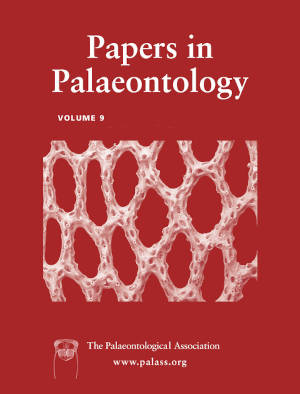Article: Early eukaryotic microfossils of the late Palaeoproterozoic Limbunya Group, Birrindudu Basin, northern Australia
Publication: Papers in Palaeontology
Volume:
9
Part:
6
Publication Date:
2023
Article number:
e1538
Author(s):
Leigh Anne Riedman, Susannah M. Porter, Maxwell A. Lechte, Angelo dos Santos, and Galen P. Halverson
DOI:
10.1002/spp2.1538
Abstract
Abstract Fine-grained, siliciclastic units of the >1642 ± 3.9 Ma late Palaeoproterozoic Limbunya Group, Birrindudu Basin host rich, well-preserved organic-walled microfossil assemblages that include members of total-group eukaryotes. These assemblages include taxa characteristic of this interval such as Tappania plana and Satka favosa, as well as less common taxa such as Gigantosphaeridium fibratum, Gigantosphaeridium floccosum, Kamolineata elongata (= Valeria elongata; new combination), and four new species. The new taxa include Limbunyasphaera operculata gen et sp. nov., the oldest known operculate taxon; the large septate filaments of Siphonoseptum bombycinum gen. et sp. nov.; the platy tubular form Birrindudutuba brigandinia gen. et sp. nov.; and Filinexum torsivum gen. et sp. nov., which bears a spirally twisted wall constructed of bound fibres. Our data show that eukaryotic fossils are particularly abundant in marginal marine environments such as tidal flats and back-barrier lagoonal settings. This is exemplified by the Blue Hole Formation, which features an especially diverse and complex assemblage. We also present a new within-formation eukaryotic species richness estimate for the Palaeoproterozoic to Tonian. This estimate indicates that the oldest eukaryote-bearing units already show species richness levels similar to those of the much younger and more heavily sampled Tonian period. Additionally, these oldest eukaryotic assemblages show significant morphological disparity, particularly in vesicle construction. These high levels of eukaryotic species richness and morphological disparity suggest that although late Palaeoproterozoic units preserve our oldest record of eukaryotes, the eukaryotic clade has a much deeper history.
